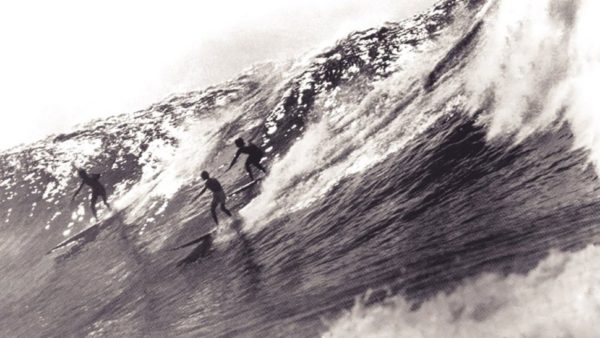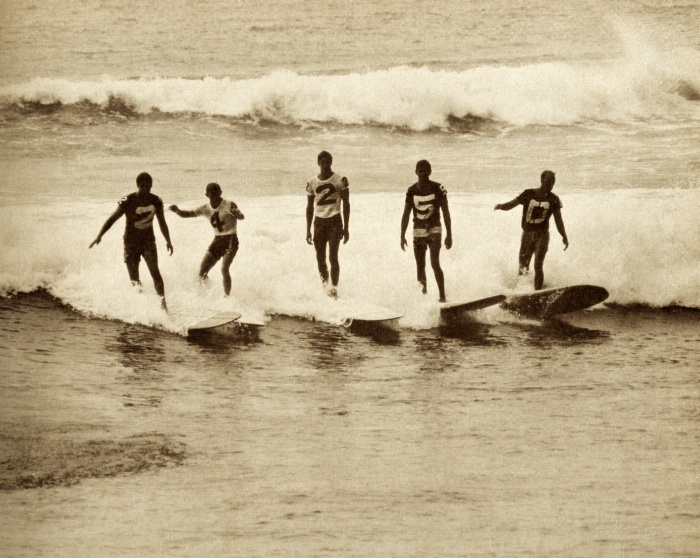Hawaiʻi’s first premier big wave surf spot wasn’t always Waimea on Oʻahu or Peʻahi (aka Jaws) on Maui. It was a break located on the west side of Oʻahu, just up the coast from Waiʻanae, called Mākaha.
In the 1930s, surfing in Hawaiʻi was very different than what we think of as surfing today. The surfboards were long and heavy, high-flying ariel maneuvers and more aggressive styles of surfing weren’t even a consideration and surf shorts rode much, much higher than the knee. Also, most of Hawaiʻi’s surfers were concentrated around Waikīkī and the south shore, with all of Oahu’s other shores, even the North Shore (often regarded as the mecca of surfing in the current day), being entirely overlooked.

Photo: Thomas “Scoop” Tsuzuki
The discovery of Mākaha’s epic surf began with a hunt—for lobsters. John Kelly and Wally Froiseth, two hot up-and-coming wave riders and Hawaiʻi locals (both were born in California, but had moved to Honolulu at young ages) decided to load up their Ford Model T with lobster nets on a fateful day in Fall of 1937. After driving out of Honolulu and to the island’s west side, they pulled up to a long, crescent-shaped beach, set out their nets and went to sleep.
In ʻōlelo Hawaiʻi (Hawaiian language), Mākaha means “fierce, savage or ferocious.” That’s what the waves must have sounded like to wake up Kelly at 3 a.m., who saw, or at least heard, waves larger and louder than anything he’d ridden in Waikīkī. And although Kelly and Froiseth returned to tell their fellow Honolulu surfers what they had experienced, nobody believed them. So, although Native Hawaiians probably surfed the wave for hundreds of years before Kelly and Froiseth’s unexpected discovery, during the late 1930s the pair rode Mākaha and they rode it alone.

Photo: Bill Clearly
As more and more wave riders began catching on to what was happening on the west side, Mākaha transformed from an (almost) empty break to a hotspot for big wave chargers. By the 1950s surfing Mākaha was no longer uncommon, Kelly and Froiseth’s naysayers were proven wrong and surfing icons of the era, like George Downing, were beginning to make themselves known by riding the wave religiously. But nothing placed Mākaha’s into surfing history more than the Mākaha International Surfing Championships (1953—1973). Put on by The Waiʻanae Lions Club and Waikīkī Surf Club, the event was the first international surf contest held in Hawaiʻi and, in 1962, it was the first televised surf contest ever, running on ABC’s “Wide World of Sports.”
Everything good at some point must come to an end. Waves. Saturdays. And in 1973, The Mākaha International Surfing Championships, which was once dubbed the “unofficial world championship of surfing.” The attention of surfers globally had shifted to the North Shore, home to now-famous waves like Pipeline and Sunset Beach. Mākaha, however, lives on. The break is still a proving ground for big wave surfers, and on smaller days, works as a fun surf spot for new and intermediate surfers. And for its 44th year, the Buffalo’s Big Board Surfing Classic, a surfing event dedicated to legendary Makaha surfer and lifeguard Richard “Buffalo” Keaulana, runs once again this weekend, Feb. 22 to Feb. 23.





Recent Comments